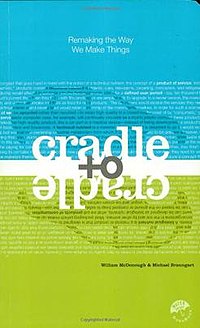Back in 1997 I was fortunate enough to interview Amory Lovins, an extremely bright man who runs the Rocky Mountain Institute and is one of the world's leading advocates and experts on energy efficiency and much more. You can read my Previous Posts about him here: AMORY LOVINS 1 and AMORY LOVINS2
He opened my mind to the fact that, following the digital revolution, a new industrial revolution was growing and evolving. The drivers for this are climate change and our need to adapt humankind and its technologies to the carrying capacity of the earth.
Ever since the 1960s, it was clear to organisations like the Club of Rome that this was the direction we needed to go in. We have ignored the signs and now face another huge boost in population, mass extinctions, water shortages and many other negative effects whilst the evidence for climate change becomes impossible to ignore. We are now in a race against time to make that change.
Nature is one of the world's finest scientific journals and recent issue has a special group of articles on what is being called the Circular Economy. The essence of the idea is summarised brilliantly in the lead piece by Walter R. Stahel:
'Cycles, such as of water and nutrients,abound in nature — discards become resources for others. Yet humans continue to ‘make, use, dispose’. One-third of plastic waste globally is not collected or managed.'There is an alternative. A ‘circular economy’ would turn goods that are at the end of their service life into resources for others, closing loops in industrial ecosystems and minimizing waste (see ‘Closing loops’).'It would change economic logic because it replaces production with sufficiency: reuse what you can, recycle what cannot be reused, repair what is broken, re-manufacture what cannot be repaired.
A study of seven European nations found that a shift to a circular economy would reduce each nation’s greenhouse-gas emissions by up to 70% and grow its workforce by about 4% — the ultimate low-carbon economy.'
One of the passionate advocates for the Circular Economy is Ellen MacArthur who in 2005 broke the world record for sailing single-handedly around the world and has now established a Foundation to accelerate the transition. This video on YouTube is one of many on this important topic.
Source: Ellen MacArthur Foundation
 The circular economy idea builds on thinking and activity that dates back many years. Another key book which influenced my thinking is the excellent Cradle to Cradle by US architect William McDonough & German chemist Michael Braungart. Its about remaking the way we make things. The book's blurb reads as follows:
The circular economy idea builds on thinking and activity that dates back many years. Another key book which influenced my thinking is the excellent Cradle to Cradle by US architect William McDonough & German chemist Michael Braungart. Its about remaking the way we make things. The book's blurb reads as follows:"Reduce, reuse, recycle" urge environmentalists; in other words, do more with less in order to minimize damage. But...such an approach only perpetuates the one-way "cradle to grave" manufacturing model, dating to the Industrial Revolution, that creates such fantastic amounts of waste and pollution in the first place. Why not challenge the belief that human industry must damage the natural world? In fact, why not take nature itself as our model for making things? A tree produces thousands of blossoms in order to create another tree, yet we consider its abundance not wasteful but safe, beautiful and highly effective.
.jpg)
'Guided by this principle, McDonough and Braungart explain how products can be designed from the outset so that, after their useful lives, they will provide nourishment for something new. They can be conceived as "biological nutrients" that will easily re-enter the water or soil without depositing synthetic materials and toxins. Or they can be "technical nutrients" that will continually circulate as pure and valuable materials within closed-loop industrial cycles, rather than being "recycled" - really downcycled - into low-grade materials and uses.The book itself, published by North Point Press is an interesting object as its printed using DuraBook technology. The pages are not paper, but rather synthetics created from plastic resins and inorganic fillers. The books are more durable and stronger than traditional paper books, waterproof, and upcyclable.

No comments:
Post a Comment